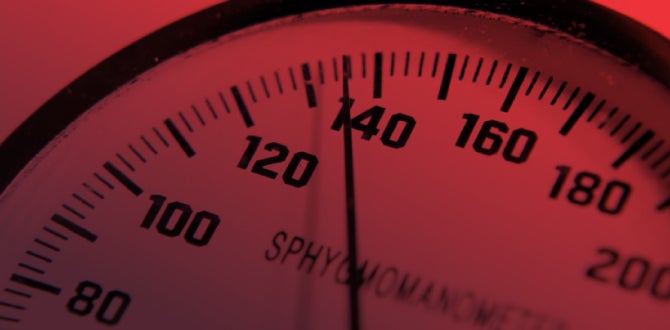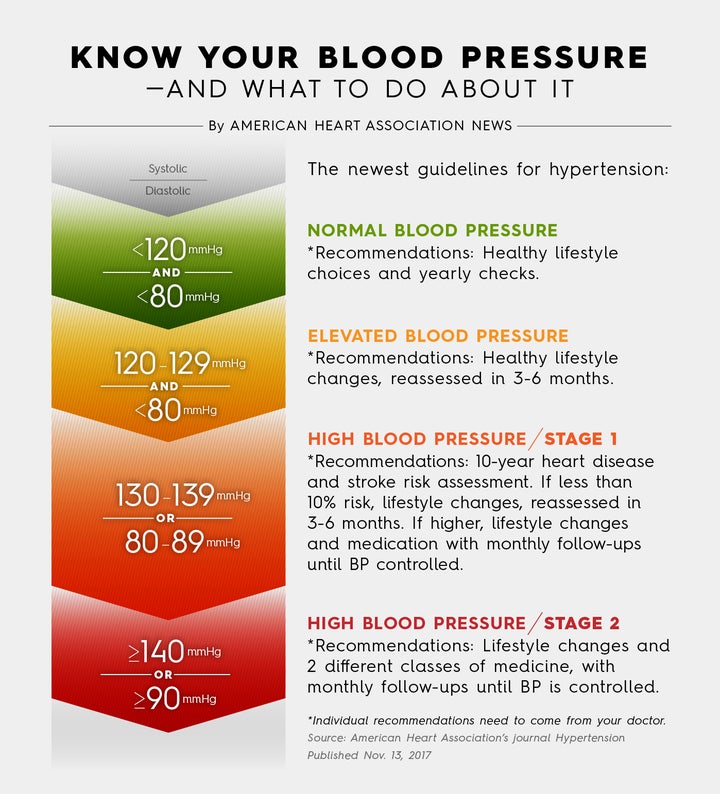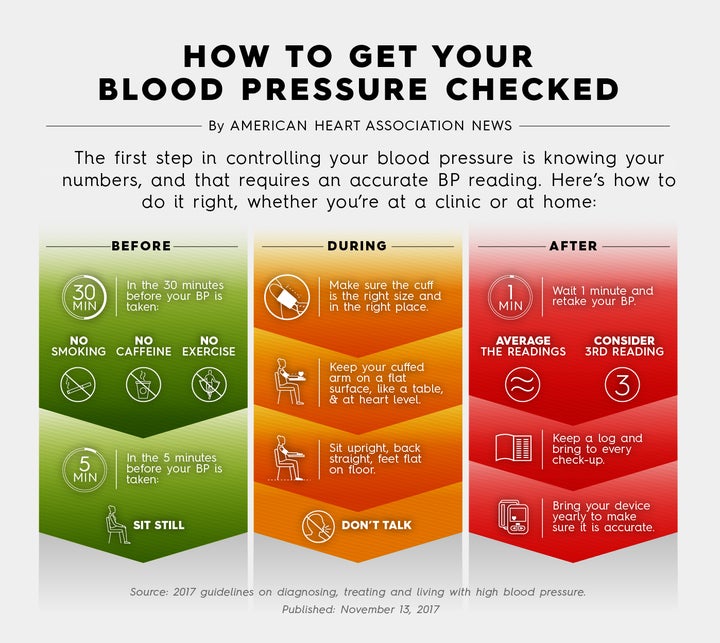
There’s a new way to classify blood pressure readings, and the biggest change is for anyone who’s been described as “prehypertensive” or “high normal.”
Millions of Americans earned those labels for having a top number of 120-139 or a bottom number of 80-89. They were encouraged to make lifestyle changes that would drop those numbers into the comfort zone of being below 120/80.
Under new guidelines released Monday, the warning zone for adults, now called “elevated blood pressure,” is trimmed to 120-129 for the top number. Anyone with 130-139 on top or in the 80s on the bottom is now considered to have high blood pressure – or, more formally, Stage 1 hypertension.

While this is likely to swell the ranks of people with hypertension from roughly 1-in-3 to nearly 1-in-2, that’s good news because it means we will begin to protect people earlier in their lives, rather than coming in after more serious damage has been done. In most cases, the prescription for getting those BP readings under control is moving more and eating and drinking less of the things you already know aren’t good for you.
“Our best estimate is that antihypertensive drug therapy, in addition to lifestyle change, will only be necessary in about 20 percent of those with Stage 1 hypertension,” said Dr. Paul Whelton, chairman of the writing committee that updated the guidelines and an epidemiology professor at Tulane University School of Public Health and Tropical Medicine.
“We’re saying that Stage 1 is the point at which we should be more aggressive in attacking hypertension,” Whelton said. “It’s no longer smart to call someone pre-anything. They need to bring their numbers down because even at that stage they have double the risk for cardiovascular events – like a heart attack or stroke – compared to people with a lower pressure.”
The other notable change is that Stage 2 now starts at 140 and 90 – which had been the starting point of high blood pressure. Stage 2 used to begin at 160 and 100.
Blood pressure is the force of blood flowing through your blood vessels. When it’s consistently too high, it can damage the delicate tissues inside the arteries – reducing their ability to help the vessels widen or dilate when they need to, and further raising the blood pressure. It’s a vicious cycle than can lead to all sorts of devastating complications: heart attacks, heart failure, stroke, problems with blood flow to your legs and your kidneys, and vision problems. It can even lead to sexual dysfunction.
High blood pressure is often called a “silent killer” because we often don’t know the damage until it’s too late.
And that’s a big focus of these guidelines – helping people get things under control earlier.
Guidelines are used by the entire medical community to decide how to approach the diagnosis, treatment and even the prevention of a disease. Given their importance, changes come only after years of research and plenty of debate. (These took about three years to create.) The scientists behind these guidelines represent experts from my organization, the American Heart Association, as well as from the American College of Cardiology and nine other health organizations.
Now let’s dive deeper into the major takeaways for you and your loved ones about the new parameters for monitoring blood pressure.
Start with the fact the latest science offers a simple, logical rule of thumb: The lower your BP numbers, the lower your risk of a cardiovascular event. The flip side also is true; the higher your numbers, the higher your risk.
For the people whose numbers haven’t changed but their classification has – taking them from the warning zone to the do-something zone – it’s important to focus on the reason for this shift. As Whelton said, there’s a spike in the risk of a devastating event.
Still not sure you want to make changes? Think of it this way: When it comes to your health, acting early always beats acting late.
“We have a tendency to wait for there to be a problem and treat it, but that doesn’t work for chronic diseases because you’re always playing from behind – you have further to go and it takes longer to get there,” Whelton said. “The problem is, it’s harder for people to get excited about prevention.”
Once you’re ready to lower your numbers, Whelton said there are three areas that generate “the underlying cause for about 90 percent of high blood pressure.” Here are those problems, along with his recommendations for turning things around:
Here are his recommendations:
Poor Diet: “If you worry at the gas station about what goes into your car, you should also worry about what you eat,” Whelton said. In general, this means consuming less sodium and more fiber and potassium. The DASH diet is a popular solution; after all, the acronym stands for Dietary Approaches to Stop Hypertension. Another good one is the Mediterranean diet.
Lack of Physical Activity: Getting active can mean walking, running or cycling, which happens to be Whelton’s favorite. Find the exercise that best fits your lifestyle.
Alcohol consumption: Moderate how many alcoholic drinks you have with an eye toward abstaining. “If you don’t drink, don’t start. If you do drink, no more than two drinks per day in men and one in women is a standard recommendation,” Whelton said.
“I’m not saying it’s easy for anyone to change their lifestyle; anyone who says that is either naïve or disingenuous,” Whelton said. “But we can encourage and facilitate the process. We want to help the public make sensible choices.”
Another layer to the guidelines is reviewing how blood pressure is taken. Since major decisions are going to be based on the readings, it only makes sense to be sure the numbers are gathered according to the textbook.
Caregivers aren’t the only ones who should know the steps. Patients should, too, both for when they’re taking BP at home and to make sure it’s done correctly everywhere else.
“You can’t be too busy to do it right,” Whelton said.
Here are the basics:
Be still for five minutes before the reading.
Don’t talk before or during the test.
Sit with your feet on the ground and your back upright – never taking it laying down.
The cuff (which needs to be the right size, of course) should be at your heart level.
Don’t settle for one reading. Because the readings can fluctuate substantially, it’s best to take at least two and preferably more, then average them.

So there you have it, an overview of everything you need to know about controlling blood pressure. Consider this education a call to action, a chance for you to improve and extend your life.
“We’re not doing or asking for anything radical,” Whelton said. “We just need people to understand how important this is.”
